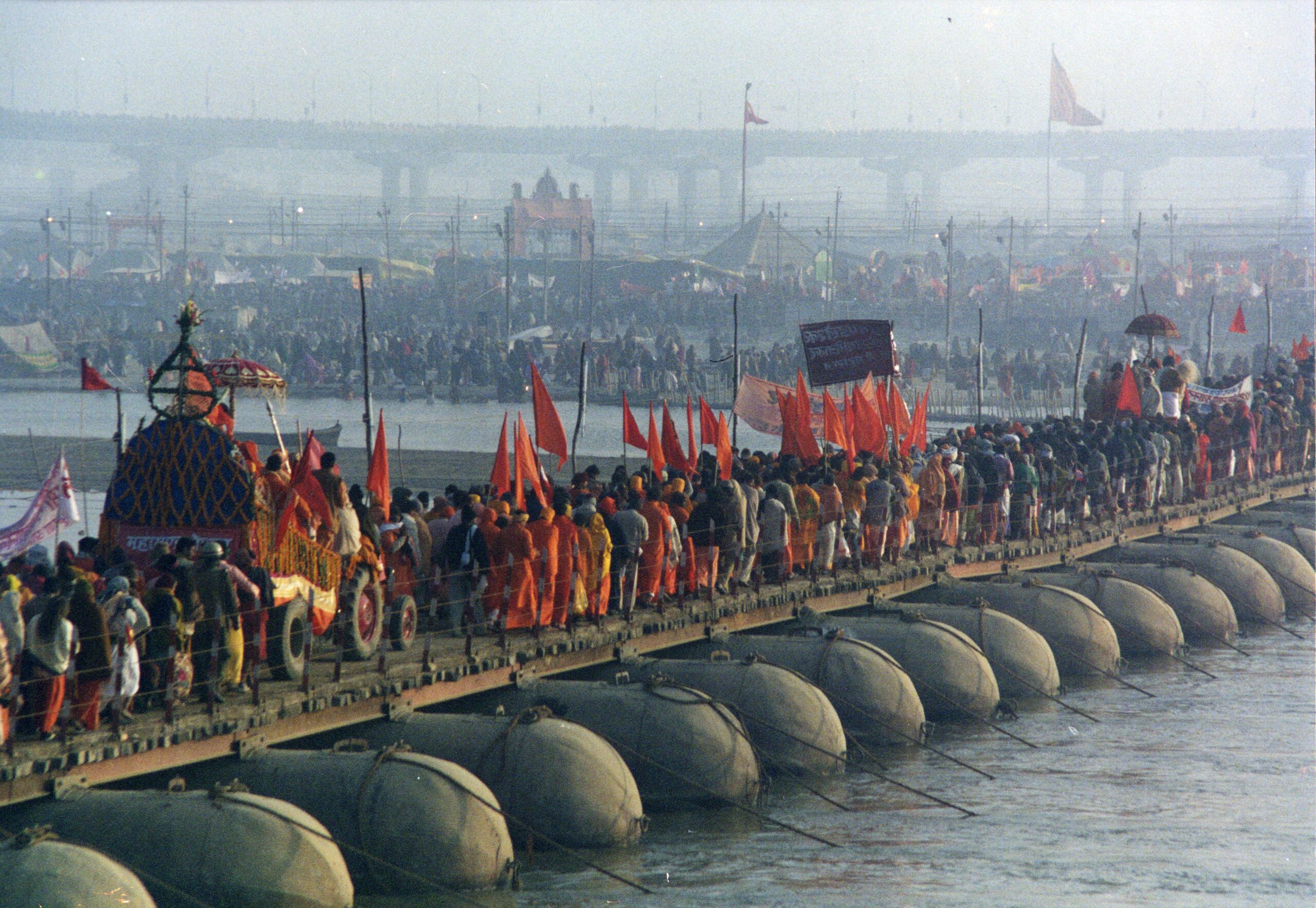Exploring the 12 Sacred Jyotirlingas in India: Locations & Spiritual Significance

Table of Contents
India is home to 12 revered Jyotirlingas, each one symbolizing a unique manifestation of Lord Shiva. These temples not only hold immense spiritual significance but also draw millions of devotees and tourists each year who seek blessings and solace. The 12 Jyotirlingas are spread across different states, making them a diverse and fascinating part of India’s religious landscape.
These temples are believed to be the places where Lord Shiva appeared in his most divine form. For travelers, visiting the Jyotirlingas is an experience that combines devotion with exploration of India’s rich history, culture, and architecture.
As these sacred sites are scattered across India, organizing a journey to these temples can be both exciting and challenging. To make this spiritual journey smoother, services like AC Tempo Traveller on Rent in Lucknow, Tempo Traveller for Outstation from Parijat Tour & Travels offer the perfect solution for a comfortable and affordable trip.
The 12 Jyotirlingas and Their Locations
1. Somnath Jyotirlinga – Prabhas Patan, Gujarat
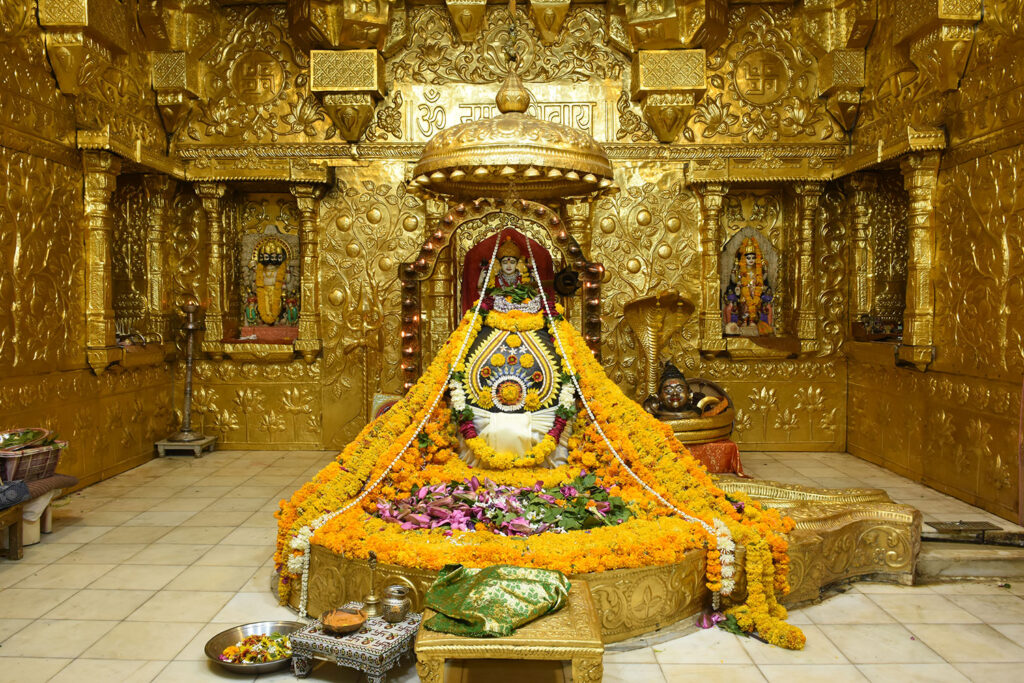
The Somnath Jyotirlinga, located in Prabhas Patan near Veraval in Gujarat, is revered as the first among the twelve Jyotirlingas. It is often referred to as the “Eternal Shrine” due to its historical and mythological significance. This sacred temple is dedicated to Lord Shiva and is said to have been rebuilt multiple times over the centuries due to invasions and destruction, showcasing the undying devotion of the Hindu community.
Historical and Mythological Significance
The legend of Somnath is deeply rooted in Hindu mythology. It is believed that the moon god, Chandra, married all 27 daughters of King Daksha but showed partiality toward Rohini, one of his wives. Angered by this, Daksha cursed Chandra, causing him to lose his brilliance. Chandra prayed to Lord Shiva at the site of the present Somnath temple, and the god blessed him, restoring his radiance. This is why the temple is also associated with the waxing and waning cycles of the moon.
Architectural Marvel
The Somnath Temple is an architectural masterpiece built in the Chalukyan style. Its intricate carvings, grand spire, and massive entrance captivate visitors. The temple overlooks the Arabian Sea, offering a serene and majestic view that adds to its spiritual aura.
Darshan and Rituals
- Opening Time: 6:00 AM to 10:00 PM
- Darshan: Available throughout the day during temple hours.
- Aarti Timings:
- Morning Aarti: 7:00 AM
- Madhyana Aarti: 12:00 PM
- Evening Aarti: 7:00 PM
During Shravan Maas (a holy month in the Hindu calendar dedicated to Lord Shiva), the temple sees a significant increase in visitors, and special rituals are conducted.
How to Reach Somnath
- By Air: The nearest airport is Diu Airport, approximately 65 km from Somnath. Regular flights connect Diu to major cities like Mumbai.
- By Train: Veraval Railway Station, just 7 km from the temple, is the nearest railhead. Trains connect Veraval to cities like Ahmedabad, Rajkot, and Mumbai.
- By Road: Somnath is well-connected by road. State transport and private buses operate from major cities in Gujarat. You can also hire a taxi or use Parijat Tour & Travels’ AC tempo traveller rental services in Lucknow for a comfortable journey.
Distance from Lucknow, Uttar Pradesh
The distance from Lucknow to Somnath is approximately 1,500 km. You can opt for a combination of flights, trains, or road travel to complete this pilgrimage.
Visiting Somnath is not just a spiritual experience but also an opportunity to witness the resilience of faith and devotion that has kept this temple alive through centuries. Whether you are a devout pilgrim or a curious traveler, Somnath Jyotirlinga is a must-visit destination for its history, spirituality, and architectural brilliance.
2. Mallikarjuna Jyotirlinga – Srisailam, Andhra Pradesh
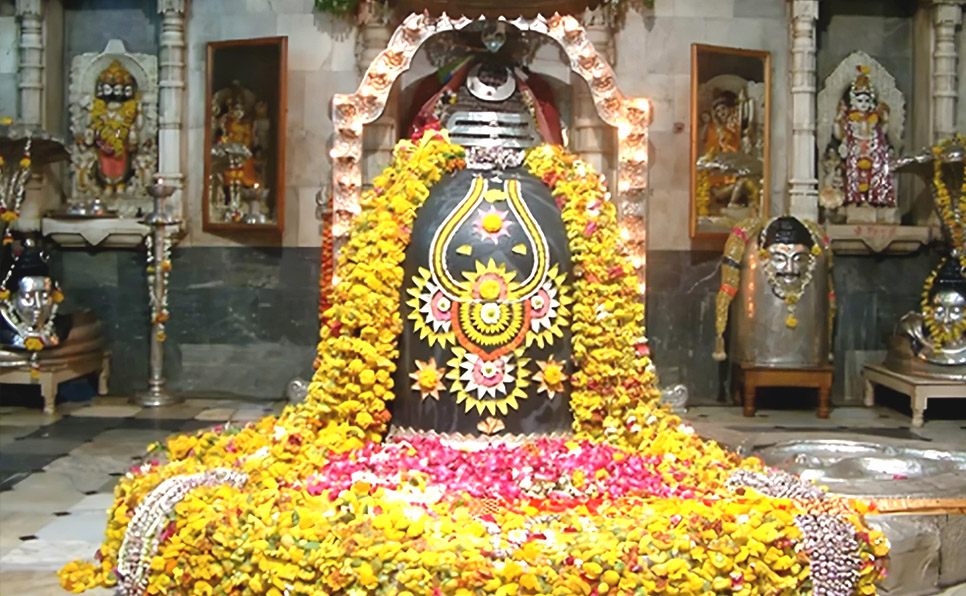
Mallikarjuna Jyotirlinga, nestled in the tranquil Srisailam region of Andhra Pradesh, is a revered temple that combines the spiritual energy of a Jyotirlinga with the sanctity of a Shakti Peetha. Located amidst the verdant Nallamala Hills, this sacred shrine attracts devotees seeking blessings from Lord Shiva and Goddess Parvati.
Historical and Mythological Significance
The temple’s origin is rooted in mythology. Kartikeya, after losing a divine contest to his brother Ganesha, retreated to Srisailam in distress. Lord Shiva and Parvati followed him here, thus sanctifying the site with their divine presence. The temple name, “Mallikarjuna,” signifies their union, with “Mallika” representing Parvati and “Arjuna” symbolizing Shiva.
Architectural Highlights
Mallikarjuna temple showcases stunning Dravidian architecture. Its finely carved pillars, intricate sculptures, and majestic gopurams reflect the craftsmanship of ancient Indian artisans. Set along the Krishna River, the temple exudes serenity and spiritual charm.
Darshan and Rituals
- Opening Time: 4:30 AM to 10:00 PM
- Darshan Timings:
- Morning: 6:00 AM to 1:00 PM
- Evening: 6:00 PM to 9:30 PM
- Special Rituals:
- Abhishekam: Devotees perform sacred offerings to Lord Shiva.
- Aarti Timings:
- Suprabhata Seva (Morning Aarti): 4:30 AM
- Maha Mangala Harathi (Evening Aarti): 6:00 PM
During Shravan Maas, the temple sees vibrant celebrations, extended darshan hours, and an influx of devotees participating in elaborate rituals.
How to Reach Mallikarjuna Jyotirlinga
- By Air: The nearest airport is Rajiv Gandhi International Airport, Hyderabad, located about 200 km from Srisailam. From there, you can hire a taxi or private vehicle to complete the journey.
- By Road: Srisailam is connected by well-maintained highways. It is around 230 km from Hyderabad via NH765. For a comfortable trip, you can hire a private vehicle or book Parijat Tour & Travels’ tempo traveller rental services in Lucknow, which cater to families and small groups for an enjoyable road trip.
- By Bus: State-run and private buses operate regularly from Hyderabad and other nearby cities. For large groups, you can book a rental bus through Parijat Tour & Travels, offering customized travel solutions for an enjoyable group pilgrimage.
- By Train: The nearest railway station is Markapur Road, about 85 km away. From here, taxis and buses are readily available to reach the temple.
Distance from Lucknow, Uttar Pradesh
The distance between Lucknow and Srisailam is approximately 1,500 km. Pilgrims often combine a flight to Hyderabad with a road journey or opt for a long but scenic road trip using private vehicle services like Parijat Tour & Travels.
A visit to Mallikarjuna Jyotirlinga is a profound spiritual experience, blending devotion, history, and the natural beauty of the Nallamala Hills.
3. Mahakaleshwar Jyotirlinga – Ujjain, Madhya Pradesh
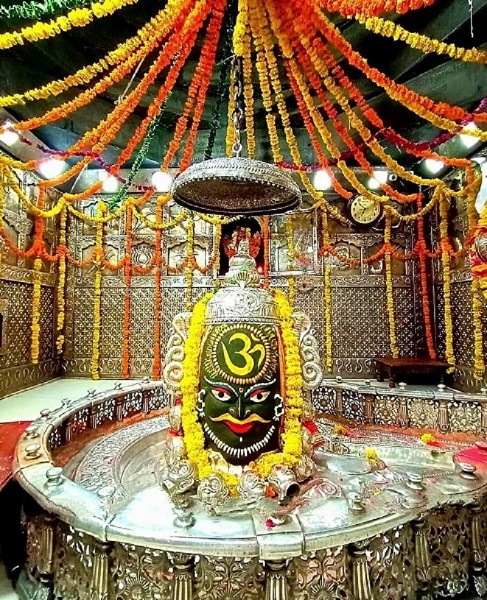
Mahakaleshwar Jyotirlinga, located in the ancient city of Ujjain in Madhya Pradesh, is one of the most revered Jyotirlingas in India. Known as the Swayambhu Jyotirlinga, this sacred shrine is believed to have manifested on its own and holds immense spiritual and mythological importance.
Historical and Mythological Significance
The legend of Mahakaleshwar tells of a demon named Dushana who terrorized the people of Ujjain. Lord Shiva descended as Mahakal and vanquished the demon, protecting his devotees. The temple also holds special significance due to its mention in ancient texts like the Skanda Purana and is closely associated with the Kumbh Mela.
Architectural Highlights
Mahakaleshwar temple boasts a unique five-story structure blending Maratha, Rajput, and Mughal architectural styles. Its grand spire, intricately carved walls, and underground sanctum, known as the Garbhagriha, create an awe-inspiring experience for visitors. The serene Rudra Sagar Lake nearby adds to the temple’s mystique.
Darshan and Rituals
- Opening Time: 3:00 AM to 11:00 PM
- Darshan Timings:
- Morning: 4:00 AM to 12:00 PM
- Evening: 7:00 PM to 11:00 PM
- Special Rituals:
- Bhasma Aarti: A unique ritual where Lord Shiva is worshipped with sacred ash at 4:00 AM. This is a must-experience event for devotees.
- Maha Rudrabhishek: An elaborate offering of holy water, milk, and honey to the Jyotirlinga.
- Aarti Timings:
- Bhasma Aarti: 4:00 AM
- Midday Aarti: 12:00 PM
- Evening Aarti: 7:00 PM
During Shravan Maas, the temple sees grand celebrations, and special processions of Lord Shiva are organized.
How to Reach Mahakaleshwar Jyotirlinga
- By Air: The nearest airport is Devi Ahilyabai Holkar Airport, Indore, approximately 55 km from Ujjain. From there, taxis or private vehicles can be hired to reach the temple.
- By Road: Ujjain is well-connected by road to major cities like Indore (55 km), Bhopal (190 km), and Jaipur (380 km). For a hassle-free journey, you can hire a private vehicle or use Parijat Tour & Travels’ tempo traveller rental services in Lucknow for a smooth and comfortable trip.
- By Bus: Regular bus services operate from Indore, Bhopal, and other nearby cities to Ujjain. For group travel, consider booking a rental bus through Parijat Tour & Travels, which provides tailored services for large pilgrim groups.
- By Train: Ujjain Junction is a major railway station, with trains connecting it to cities across India. Taxis and local transport options are available from the station to the temple.
Distance from Lucknow, Uttar Pradesh
The distance between Lucknow and Ujjain is approximately 830 km. You can plan your journey by road, combining it with a stopover at Indore, or opt for a train journey directly to Ujjain Junction. Alternatively, Parijat Tour & Travels’ services can ensure a seamless and enjoyable road trip for families and groups.
A visit to Mahakaleshwar Jyotirlinga is a profound spiritual journey into the heart of Lord Shiva’s divine energy and the rich cultural heritage of Ujjain.
4. Omkareshwar Jyotirlinga – Mandhata Island, Madhya Pradesh
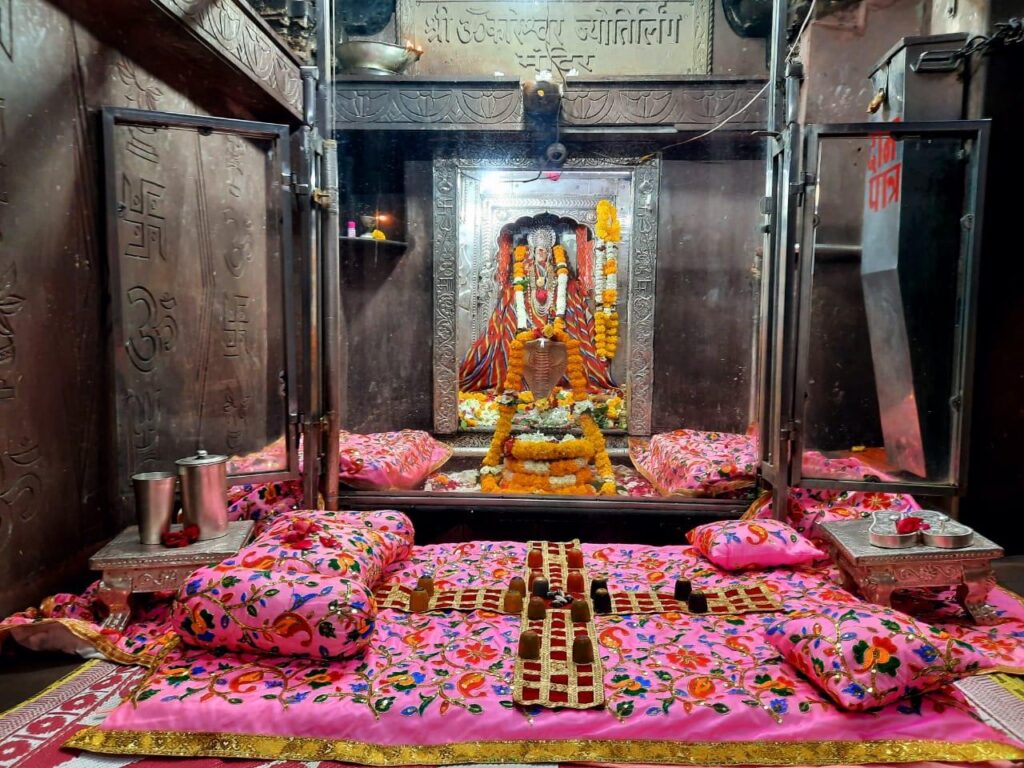
Omkareshwar Jyotirlinga, located on the serene Mandhata Island in the Narmada River, Madhya Pradesh, is one of the 12 sacred Jyotirlingas in India. The temple’s name derives from its resemblance to the holy symbol “Om”, a divine syllable in Hinduism. This Jyotirlinga holds immense spiritual importance and attracts devotees from all over the world.
Historical and Mythological Significance
Omkareshwar is closely associated with the legend of King Mandhata, an ardent devotee of Lord Shiva. It is said that the Lord appeared here to bless the king after his relentless penance. Another tale speaks of the Vindhya mountain performing penance here to atone for its ego, after which Lord Shiva appeared as Omkareshwar.
Architectural Highlights
The temple’s location on the island makes it a marvel to behold. Surrounded by the Narmada River, the temple can be reached by a picturesque boat ride. The structure reflects intricate architectural styles, with beautiful carvings and a sanctum housing the revered Jyotirlinga.
Darshan and Rituals
- Opening Time: 5:00 AM to 9:30 PM
- Darshan Timings:
- Morning: 5:30 AM to 12:00 PM
- Evening: 5:00 PM to 9:30 PM
- During Shravan Maas: 3:00 AM to 11:00 PM
- Special Rituals:
- Abhishek Puja: Devotees offer holy water, milk, and flowers to the Jyotirlinga.
- Rudrabhishek: Performed by priests, this ritual invokes Lord Shiva’s blessings for prosperity.
- Aarti Timings:
- Mangala Aarti: 5:00 AM
- Afternoon Aarti: 12:00 PM
- Evening Aarti: 7:00 PM
- Night Aarti: 9:00 PM
During festivals like Maha Shivaratri, the temple is decorated beautifully, and grand celebrations take place, attracting thousands of devotees.
How to Reach Omkareshwar Jyotirlinga
- By Air: The nearest airport is Devi Ahilyabai Holkar Airport in Indore, approximately 80 km away. From the airport, you can hire a taxi or private vehicle to reach Omkareshwar.
- By Road: Omkareshwar is well-connected by road to major cities in Madhya Pradesh like Indore (80 km), Ujjain (135 km), and Bhopal (250 km). For a comfortable journey, hire a private vehicle or choose Parijat Tour & Travels’ tempo traveller Rental services in Lucknow, which offer reliable and convenient travel options.
- By Bus: State-run and private buses operate regularly to Omkareshwar from nearby cities. For large groups, you can book a bus on rent through Parijat Tour & Travels, ensuring a hassle-free journey.
- By Train: The nearest railway station is Omkareshwar Road, around 12 km from the temple. From there, local transport options like auto-rickshaws or cabs are available.
Distance from Lucknow, Uttar Pradesh
The distance from Lucknow to Omkareshwar is approximately 950 km. You can plan your journey by road, train, or a combination of flight and private transport. Parijat Tour & Travels can provide seamless travel arrangements, ensuring a smooth trip for families and groups.
Visiting Omkareshwar Jyotirlinga is a spiritually enriching experience, offering an opportunity to connect with Lord Shiva amidst the breathtaking beauty of the Narmada River. The divine aura of this temple makes it a must-visit destination for devotees and pilgrims alike.
5.Kedarnath Jyotirlinga – Rudraprayag, Uttarakhand
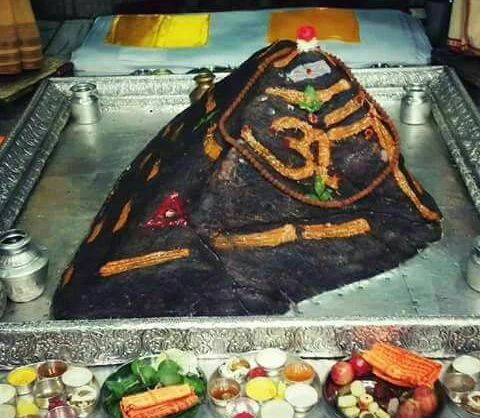
Nestled in the Garhwal Himalayas at an elevation of 3,583 meters, Kedarnath Jyotirlinga is one of the most revered pilgrimage sites for Lord Shiva devotees. Surrounded by snow-clad peaks and near the source of the Mandakini River, Kedarnath is not just a spiritual haven but also a testament to architectural brilliance amidst harsh natural conditions.
Historical and Mythological Significance
Kedarnath is steeped in mythology, often associated with the Mahabharata. It is believed that after the Kurukshetra war, the Pandavas sought Lord Shiva’s forgiveness for the bloodshed. Lord Shiva, unwilling to forgive, disguised himself as a bull and hid in the Kedarnath region. When the Pandavas recognized him, the Lord dived into the ground, leaving only his hump above the surface, which is now worshipped as the Jyotirlinga.
Architectural Marvel
Built with massive grey stone slabs, the Kedarnath temple is a stunning architectural wonder. The sanctum houses the sacred Shivling, revered as the hump of the bull-shaped Lord Shiva. The temple stands resilient against harsh weather and floods, showcasing its divine and enduring significance.
Darshan and Rituals
- Opening Time: 4:00 AM to 9:00 PM (closed during winter due to snowfall).
- Darshan Timings:
- Morning: 4:00 AM to 3:00 PM
- Evening: 5:00 PM to 9:00 PM
- During Shravan Maas: 3:00 AM to 11:00 PM (due to high influx of devotees).
- Special Rituals:
- Rudrabhishek: Performed with holy water, milk, and ghee to invoke blessings.
- Mahabhishek Puja: An elaborate ritual for prosperity and spiritual growth.
- Aarti Timings:
- Mangala Aarti: 4:00 AM
- Evening Aarti: 7:00 PM
How to Reach Kedarnath Jyotirlinga
- By Air: The nearest airport is Jolly Grant Airport in Dehradun, approximately 240 km from Kedarnath. From the airport, hire a taxi or tempo traveller for further travel to Gaurikund, the base point for the Kedarnath trek.
- By Road: Kedarnath is accessible by road up to Gaurikund. For a hassle-free journey, you can hire tempo traveller on rent in lucknow or innova crysta rentals from Parijat Tour & Travels , which offers comfortable travel solutions.
- By Bus: State-run buses are available to Gaurikund from major cities like Haridwar and Rishikesh. For group travel, opt for a rental bus from Parijat Tour & Travels to ensure a seamless and convenient journey.
- By Train: The nearest major railway station to Kedarnath is Rishikesh Railway Station, which is around 205 km from Kedarnath. From Rishikesh, you can travel by road (bus or private car) to Gaurikund. After reaching Gaurikund, you can either trek or take a pony to reach the temple.
- By Trek: From Gaurikund, Kedarnath is a 16 km trek. Ponies, palanquins, and helicopter services are also available for the trek.
Distance from Lucknow, Uttar Pradesh
The distance from Lucknow to Kedarnath is approximately 1,020 km. Travelers can combine road and air travel or use Parijat Tour & Travels for a customized road trip for families or groups.
Tips for Visiting Kedarnath
- Due to high altitude, acclimatize properly to avoid health issues.
- Carry adequate warm clothing and waterproof gear.
- Pre-book helicopter services if trekking is not feasible.
Kedarnath Jyotirlinga offers a divine experience amidst the majestic beauty of the Himalayas. The serenity and spiritual essence of this temple make it a must-visit destination for Lord Shiva devotees and nature lovers alike.
6. Bhimashankar Jyotirlinga – Pune, Maharashtra
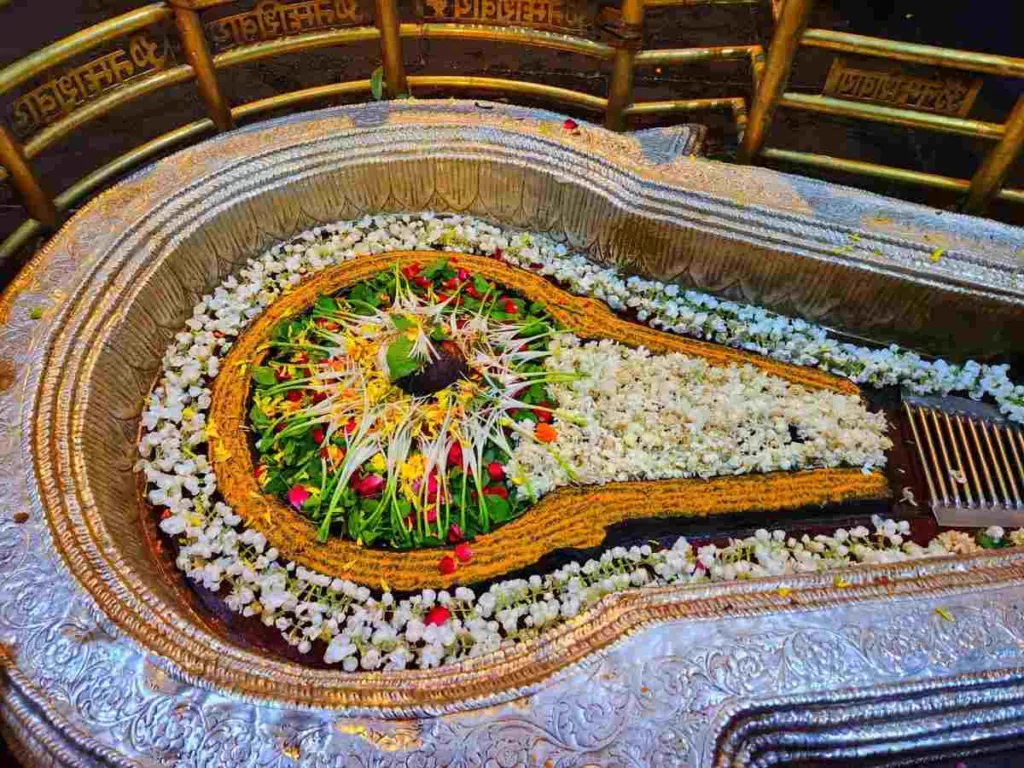
Situated in the serene Sahyadri Hills of Maharashtra, Bhimashankar Jyotirlinga is a sacred shrine dedicated to Lord Shiva. This temple, surrounded by lush greenery and wildlife, offers a spiritual retreat as well as a chance to connect with nature. Bhimashankar is also the origin of the Bhima River, further adding to its sacred significance.
Historical and Mythological Significance
The temple is associated with the legend of Lord Shiva defeating the demon Tripurasura, who terrorized the gods and humanity. It is said that after vanquishing the demon, Lord Shiva manifested as a Jyotirlinga at Bhimashankar. The spot became a center for devotion and worship ever since.
Architectural Marvel
The temple is an exquisite blend of ancient Nagara architectural style and a touch of modernity. The intricate carvings on the walls depict stories from Hindu scriptures, while the sanctum houses the sacred Jyotirlinga. The surroundings of Bhimashankar Temple, rich in biodiversity, make it a part of the Bhimashankar Wildlife Sanctuary.
Darshan and Rituals
- Opening Time: 4:30 AM to 9:30 PM.
- Darshan Timings:
- Morning: 5:00 AM to 1:00 PM
- Evening: 4:00 PM to 9:30 PM
- During Shravan Maas: 3:00 AM to 11:00 PM (extended hours due to increased footfall).
- Special Rituals:
- Rudrabhishek: Devotees offer milk, honey, and ghee to the Shivling.
- Abhishek: A sacred water bath of the deity, accompanied by Vedic chanting.
- Aarti Timings:
- Mangala Aarti: 4:30 AM
- Evening Aarti: 7:30 PM
How to Reach Bhimashankar Jyotirlinga
- By Air: The nearest airport is Pune International Airport, around 110 km from Bhimashankar. From there, you can hire a private vehicle to reach the temple.
- By Road: Bhimashankar is well-connected by road. You can hire a private car or tempo traveller on rent in Lucknow From Parijat Tour & Travels for a comfortable journey. These services are ideal for families and groups looking for a stress-free pilgrimage.
- By Bus: State transport buses run from Pune and Mumbai to Bhimashankar. For larger groups, you can book a bus on rent from Parijat Tour & Travels to ensure convenient travel.
- By Train: The nearest railway station is Pune Junction, which is approximately 110 km away from Bhimashankar. From Pune, you can hire a taxi or use local transport to reach the temple.
Distance from Lucknow, Uttar Pradesh
The distance from Lucknow to Bhimashankar Jyotirlinga is approximately 1,400 km. A combination of air and road travel is recommended for a quicker and more comfortable journey.
Tips for Visiting Bhimashankar
- Wear comfortable shoes, as reaching the temple involves a small trek.
- Carry water and snacks, as the region can get humid.
- Visit during early morning hours for a peaceful darshan experience.
Bhimashankar Jyotirlinga is a unique blend of spirituality and natural beauty, making it a must-visit destination. Whether you are on a religious journey or looking to explore the scenic charm of the Sahyadri Hills, this temple offers an experience that rejuvenates the mind and soul.
7. Kashi Vishwanath Jyotirlinga – Varanasi, Uttar Pradesh
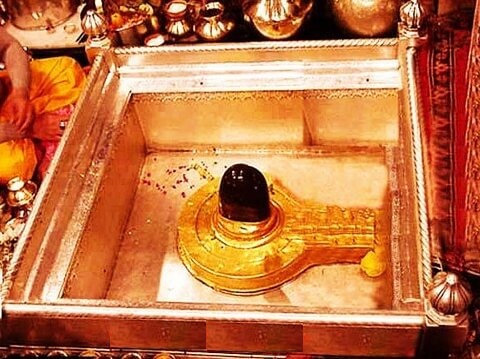
Kashi Vishwanath Jyotirlinga is one of the most revered and sacred temples dedicated to Lord Shiva. Located in the holy city of Varanasi, Uttar Pradesh, this Jyotirlinga is one of the 12 Jyotirlingas in India. It is considered one of the most spiritually significant temples in India, attracting millions of devotees and tourists from all over the world. The Kashi Vishwanath temple is not just a religious destination but also a symbol of India’s ancient spiritual heritage and cultural history.
Historical and Mythological Significance
The Kashi Vishwanath temple holds a significant place in Hindu mythology. According to one legend, Lord Shiva himself chose Kashi (Varanasi) as his eternal abode. It is believed that the city of Kashi is the oldest living city in the world and has been a spiritual center since ancient times. The temple is dedicated to Vishwanath, meaning “Lord of the Universe,” an epithet of Lord Shiva.
Another mythological tale is associated with the origin of the temple. It is said that the demon Tripurasura created a great disturbance in the universe, and Lord Shiva destroyed him. After this event, Shiva granted his divine presence in Kashi to bless and protect his devotees, which led to the establishment of the Kashi Vishwanath temple. For Hindus, the temple is also associated with the attainment of moksha (liberation from the cycle of rebirth), making it one of the holiest places to visit.
Architecture and Design
The Kashi Vishwanath temple is known for its stunning architecture. The temple is designed in the Nagara style, and the main sanctum houses the Shiva Lingam, which is revered by devotees. The temple’s golden dome is an iconic feature and can be seen from a distance, symbolizing the divine presence of Lord Shiva. The temple complex has several smaller shrines dedicated to other deities, including Goddess Annapurna, Lord Vishnu, and Lord Ganesha.
The temple’s spires and the golden shikhar (spire) are among its most prominent architectural features, making it one of the most beautiful temples in India. The temple’s location along the banks of the sacred Ganga River adds to its sanctity and serene atmosphere.
Darshan and Rituals
- Opening Time: The temple opens early in the morning and remains open throughout the day for darshan.
- Darshan Timings:
- Morning Darshan: 4:00 AM to 1:00 PM
- Evening Darshan: 2:00 PM to 11:00 PM
- During Shravan Maas: Kashi Vishwanath temple witnesses a surge in devotees, and darshan timings are extended from 3:00 AM to 12:00 Midnight during the Shravan month.
- Puja Timings:
- Morning Puja: 5:30 AM to 6:30 AM
- Evening Puja: 7:00 PM to 8:00 PM
- Aarti Timings:
- Morning Aarti: 4:30 AM
- Evening Aarti: 7:30 PM
How to Reach Kashi Vishwanath Jyotirlinga
- By Air: The nearest airport to Kashi Vishwanath Jyotirlinga is Lal Bahadur Shastri International Airport (Varanasi), located around 25 km from the temple. From the airport, you can take a taxi or hire a private vehicle to reach the temple.
- By Road:
- Private Vehicle: Varanasi is well-connected by road, and the temple is easily accessible from various cities in Uttar Pradesh and neighboring states. You can hire a private vehicle like innova crysta, swift dzire, maruti suzuki ertiga or use tempo traveller rental services from Parijat Tour & Travels to ensure a comfortable and convenient journey to Kashi Vishwanath. For larger groups, booking a rental bus from Parijat Tour & Travels is also an excellent option.
- Bus: Uttar Pradesh State Road Transport Corporation (UPSRTC) operates buses from various parts of Uttar Pradesh to Varanasi. Once in Varanasi, you can take a local taxi or auto-rickshaw to the temple.
- By Train: Varanasi is well-connected by train with all major cities across India. Varanasi Junction is the nearest railway station, located about 5 km from Kashi Vishwanath temple. From the station, you can easily reach the temple by local transport like taxis, auto-rickshaws, or cycle rickshaws. Alternatively, Parijat Tour & Travels offers private transport services, ensuring a comfortable journey from the railway station to the temple.
Distance from Lucknow, Uttar Pradesh
The distance from Lucknow to Kashi Vishwanath is approximately 320 km. You can drive to Varanasi by road, which takes around 6 to 7 hours. Alternatively, you can travel by train from Lucknow Junction to Varanasi Junction, which takes around 5 to 6 hours. Once in Varanasi, you can use local transportation or opt for Parijat Tour & Travels’ tempo traveller Rental services in Lucknow for a hassle-free and comfortable ride to the temple.
Tips for Visiting Kashi Vishwanath Jyotirlinga
- Since Kashi Vishwanath is a very popular pilgrimage destination, it can get crowded, especially during peak seasons or festivals. It is advisable to plan your visit early in the morning to avoid long queues.
- The temple is located in a congested area, so make sure to carry only essential items and avoid bringing large bags.
- Be respectful of the temple customs and dress modestly while visiting the temple.
- The Ganga Aarti at Dashashwamedh Ghat, held every evening near the temple, is an important ritual and should not be missed.
- There are many small lanes around the temple that lead to local markets, where you can buy religious items and souvenirs.
8. Rameshwar Jyotirlinga – Rameswaram, Tamil Nadu
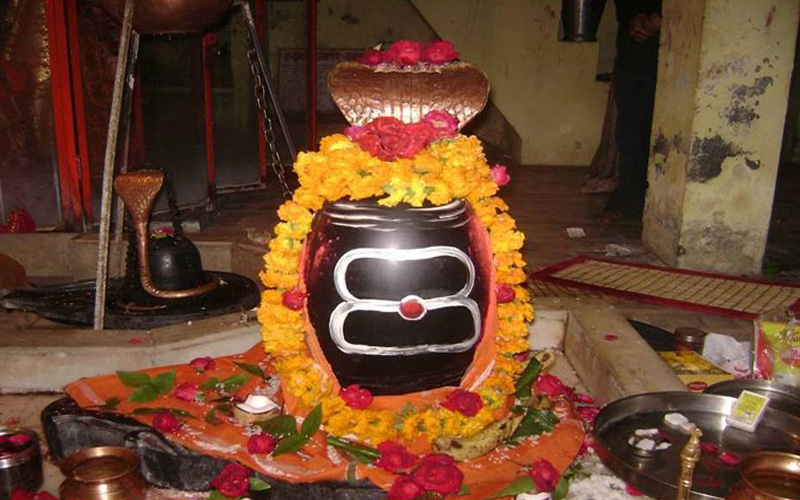
Rameshwar Jyotirlinga, located in the sacred town of Rameswaram in Tamil Nadu, is one of the most revered Jyotirlingas in India. This temple is dedicated to Lord Shiva and is believed to be the place where Lord Rama worshipped Lord Shiva to seek his blessings before embarking on his battle to rescue Sita from Ravana. The temple’s spiritual significance is intertwined with the great epic of the Ramayana, making it an important pilgrimage destination for Hindus. Rameshwar is also closely associated with the Rama Setu (Adam’s Bridge), a natural formation linking India to Sri Lanka.
Historical and Mythological Significance
The legend behind Rameshwar Jyotirlinga dates back to the time of the Ramayana, where it is said that Lord Rama, after defeating Ravana, sought Lord Shiva’s blessings to cleanse himself of the sin of killing a Brahmin (Ravana, who was a Brahmin). Lord Rama built a shrine dedicated to Lord Shiva, and worshiped the Jyotirlinga in order to absolve himself of the sin.
According to the mythological story, Lord Hanuman is also associated with the Rameshwar temple, as he was instructed to bring a Shiva Lingam from the Himalayas for Lord Rama’s puja. However, due to the delay, Lord Rama created a Lingam with sand from the sea, which became the central object of worship. This Lingam is said to be the main deity in the Rameswar Temple and is revered by millions of pilgrims every year.
The town of Rameswaram holds religious importance because it is believed to be the place where Lord Rama and his army crossed the Rama Setu (Adam’s Bridge) to reach Lanka. The Rameshwar Jyotirlinga is hence not only a sacred spot for Lord Shiva devotees but also holds immense significance for devotees of Lord Rama.
Architecture and Design
The Rameshwar Temple is an architectural marvel. The temple complex features long corridors, grand pillars, and intricate carvings, reflecting the architectural brilliance of South Indian temple design. The temple is built in a Dravidian style and consists of several shrines, with the main shrine housing the Shiva Lingam. Pilgrims can enter the temple and perform puja rituals near the Lingam.
The temple also has a sacred tank known as the Rama Tirtham, where devotees take a holy dip before entering the temple. This holy water is believed to purify one’s soul.
A highlight of the Rameshwar temple is its beautiful corridors, which are some of the longest in India. The temple’s grandeur and the Rama Setu add to the profound spiritual experience.
Darshan and Rituals
- Opening Time: The temple opens early in the morning and stays open until night.
- Darshan Timings:
- Morning Darshan: 5:00 AM to 1:00 PM
- Evening Darshan: 3:00 PM to 9:00 PM
- During Shravan Maas: The temple sees a large number of pilgrims during the Shravan Maas (the holy month dedicated to Lord Shiva), and special rituals are conducted.
- Puja Timings:
- Morning Puja: 5:30 AM to 7:00 AM
- Evening Puja: 6:00 PM to 7:30 PM
- Aarti Timings:
- Morning Aarti: 6:00 AM
- Evening Aarti: 7:00 PM
How to Reach Rameshwar Jyotirlinga
- By Air: The nearest airport to Rameswaram is the Madurai Airport, located approximately 170 km away. From Madurai, you can take a private taxi to Rameswaram, which will take around 3-4 hours.
- By Road:
- Private Vehicle: Rameswaram is well-connected to major cities in Tamil Nadu, such as Chennai (approximately 600 km), Madurai (approximately 170 km), and Trichy (approximately 230 km). You can hire a private vehicle to travel comfortably to Rameswaram. For a smooth and comfortable road trip, you can also choose Parijat Tour & Travels’ tempo traveller rental services in Lucknow, which offer reliable transportation for families and groups. If you’re traveling with a large group, Parijat Tour & Travels can arrange a bus on rent in Lucknow for the journey.
- Bus: Rameswaram has a well-established bus service connecting it with cities like Madurai, Chennai, and Coimbatore. You can take a bus from the nearest bus station to reach Rameswaram.
- By Train: The Rameswaram Railway Station is well connected to major cities like Madurai, Chennai, and Coimbatore. You can take a train from Chennai or Madurai to Rameswaram. From the railway station, you can take a taxi or auto-rickshaw to reach the temple.
Distance from Lucknow, Uttar Pradesh
The distance from Lucknow to Rameshwar Jyotirlinga is approximately 2,300 km by road. The journey can take about 36-40 hours depending on the route and traffic conditions. Alternatively, you can take a train from Lucknow to Madurai or Chennai, and then continue your journey to Rameswaram by taxi or bus.
Tips for Visiting Rameshwar Jyotirlinga
- Crowds: The temple is one of the most visited pilgrimage sites, especially during Mahashivaratri, Shravan Maas, and Navaratri. Visiting early in the morning or during off-peak seasons will help you avoid the crowds.
- Dress Modestly: Since this is a sacred place, pilgrims should dress modestly and appropriately when visiting the temple.
- Temple Rituals: It is customary to offer flowers, fruits, and milk during the puja. Devotees can also participate in Aarti and Abhishekam rituals.
- Explore the Region: While in Rameswaram, take time to explore the town’s other significant sites such as Dhanushkodi, Rama Setu, and the Rama Tirtham.
Visiting Rameshwar Jyotirlinga not only offers you spiritual fulfillment but also gives you a chance to experience the rich cultural heritage and historical significance of this temple.
9.Nageshwar Jyotirlinga – Dwarka, Gujarat
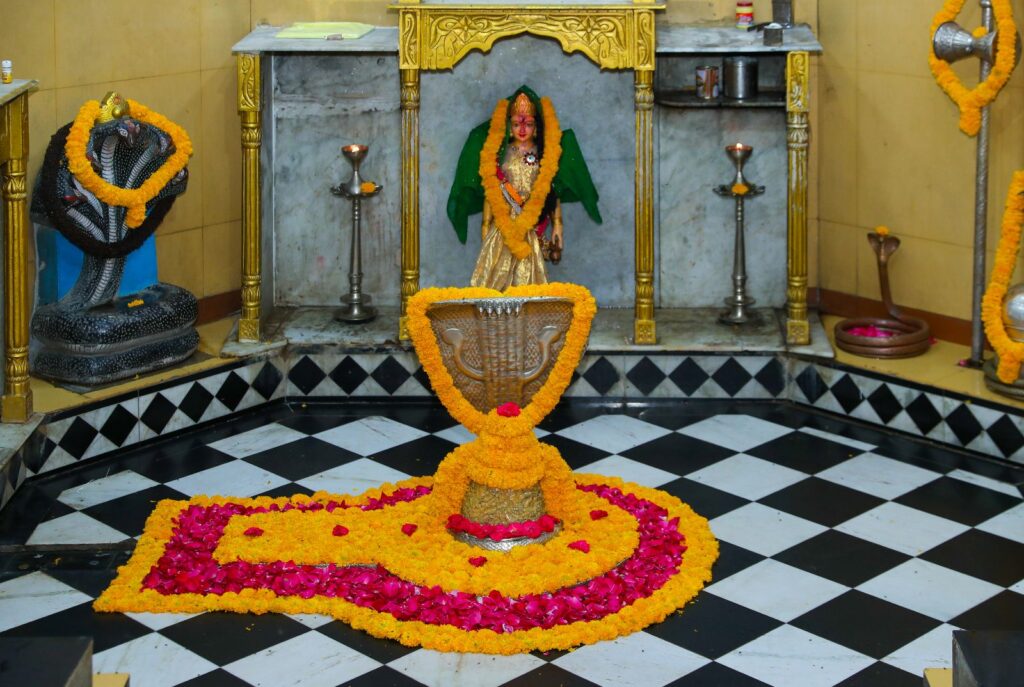
Nageshwar Jyotirlinga is one of the twelve revered Jyotirlingas, located in the coastal town of Dwarka, Gujarat. This sacred temple is dedicated to Lord Shiva in his form as Nageshwar, the lord of serpents. Nageshwar is believed to be the temple where Lord Shiva protected his devotee from the evil forces and is associated with the protection of his followers from malevolent spirits. The Nageshwar Jyotirlinga is an important pilgrimage site for devotees who seek blessings for mental peace and spiritual well-being.
Historical and Mythological Significance
Nageshwar Jyotirlinga has deep connections with Hindu mythology. According to one of the prominent legends, it is believed that a demon named Daruka terrorized the residents of Dwarka. The people prayed to Lord Shiva, who appeared in the form of a Jyotirlinga and defeated the demon, restoring peace. As a mark of gratitude, a temple was constructed at the spot where Lord Shiva had appeared.
Another version of the story associates the Jyotirlinga with the serpent king Kaliya. The serpent Kaliya had poisoned the Yamuna River, and Lord Krishna had to subdue him. After this incident, Lord Shiva blessed Kaliya by protecting him from danger and gave him the position of a guardian of the Dwarka region.
Architecture and Design
The Nageshwar Jyotirlinga temple is a beautiful example of ancient Indian temple architecture. The temple features intricate carvings and sculptures that depict various forms of Lord Shiva, along with other deities associated with Hindu mythology. The Shiva Lingam in the sanctum is highly revered and is the central point of worship in the temple. The domed structure of the temple is complemented by a Shiva Trishul (trident) situated at the entrance, symbolizing Lord Shiva’s immense power and energy.
The temple is surrounded by a large courtyard, with many smaller shrines dedicated to other Hindu gods. The serene and peaceful environment around the temple makes it a perfect place for meditation and spiritual practice.
Darshan and Rituals
- Opening Time: The temple opens early in the morning and remains open throughout the day for darshan and rituals.
- Darshan Timings:
- Morning Darshan: 6:00 AM to 1:00 PM
- Evening Darshan: 4:00 PM to 8:00 PM
- During Shravan Maas: The temple experiences a higher influx of pilgrims, and special rituals are performed. The darshan timings may extend during this period.
- Puja Timings:
- Morning Puja: 6:00 AM to 7:30 AM
- Evening Puja: 6:00 PM to 7:00 PM
- Aarti Timings:
- Morning Aarti: 6:30 AM
- Evening Aarti: 7:30 PM
How to Reach Nageshwar Jyotirlinga
- By Air: The nearest airport to Nageshwar Jyotirlinga is Dwarka Airport (also known as Porbandar Airport), which is located approximately 30 km from the temple. However, flights to Dwarka are limited. Alternatively, you can fly to Saurashtra or Ahmedabad, and from there, take a private taxi to Dwarka.
- By Road:
- Private Vehicle: The temple is well-connected by road, and you can hire a private vehicle to reach Dwarka from cities like Ahmedabad (approximately 440 km) or Rajkot (approximately 230 km). For a comfortable journey, you can choose Parijat Tour & Travels for tempo traveller rental services in Lucknow, which provide reliable transportation for families or groups visiting Nageshwar. If you are traveling with a large group, you can also book a bus on rent from Parijat Tour & Travels for an enjoyable ride.
- Bus: Gujarat State Road Transport Corporation (GSRTC) runs regular buses to Dwarka from various cities in Gujarat. You can take a bus to Dwarka and then use a local taxi or auto-rickshaw to reach the temple.
- By Train:
Dwarka is connected to major cities in Gujarat through the Dwarka Railway Station. Once you arrive at the station, you can take a local taxi, auto-rickshaw, or cycle rickshaw to reach the temple. Alternatively, Parijat Tour & Travels can provide comfortable transfers from the railway station to the temple.
Distance from Lucknow, Uttar Pradesh
The distance from Lucknow to Nageshwar Jyotirlinga is approximately 1,150 km. You can travel by road, which will take about 18-20 hours, depending on the route and traffic conditions. Alternatively, you can travel by train to Dwarka via Ahmedabad or Rajkot, which takes around 20-24 hours, and then reach the temple by local transportation.
Tips for Visiting Nageshwar Jyotirlinga
- Crowds: Since Nageshwar is a popular pilgrimage site, it can get crowded during festival seasons, especially Mahashivaratri and Shravan Maas. To avoid long waits, it’s best to visit early in the morning or late evening.
- Dress Modestly: As a place of religious significance, it is important to dress modestly while visiting the temple.
- Devotional Offerings: It is common to offer flowers, milk, and other religious items during puja. You can also make special offerings like bel leaves (a favorite of Lord Shiva) or prayers for protection from evil spirits.
- Other Attractions: After visiting the Nageshwar temple, you can explore other tourist attractions in Dwarka, including the Dwarkadhish Temple, Dwarka Beach, and Bet Dwarka.
Visiting the Nageshwar Jyotirlinga not only offers a spiritual experience but also provides a chance to enjoy the natural beauty and peaceful ambiance of Dwarka.
10. Vaijnath Jyotirlinga – Parli, Maharashtra
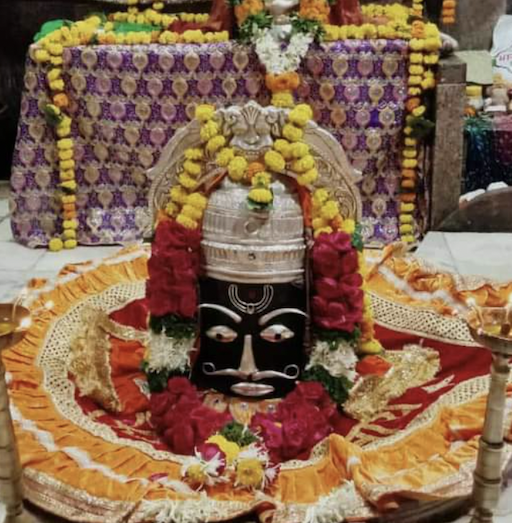
Vaijnath Jyotirlinga is located in the town of Parli in Maharashtra. It is one of the revered 12 Jyotirlingas of Lord Shiva, situated in the Beed district. This temple is known for its religious significance and is an important pilgrimage site for devotees who seek the blessings of Lord Shiva for their well-being and prosperity.
Vaijnath Jyotirlinga is uniquely associated with the legend of a sage, Vajrinath, who performed severe penance in this area. It is believed that Lord Shiva appeared here in the form of a Jyotirlinga to bless the sage, and this marks the origin of the Vaijnath Jyotirlinga.
Historical and Mythological Significance
According to the legend, Vajrinath, a great sage, used to perform intense penance in the sacred land of Parli. Pleased with his devotion, Lord Shiva appeared in the form of a Shiva Linga to grant him divine blessings. The temple is a manifestation of Lord Shiva’s mercy, and the Jyotirlinga is believed to bring blessings of strength, health, and success.
This temple holds great importance not only due to its religious significance but also due to the presence of sacred water, which devotees believe has purifying properties. People visit the Vaijnath temple for spiritual upliftment and fulfillment of desires, seeking peace, prosperity, and the removal of obstacles in their lives.
Architecture and Design
The architecture of the Vaijnath Temple follows the traditional style of Maharashtra’s temples, with a distinct multi-pillared hall and a graceful shikhara (spire). The temple’s design is relatively simple but elegant, focusing on the sanctity and beauty of the Shiva Linga enshrined inside.
The temple complex also includes a holy tank (Pushkarni), which is used by devotees for taking a sacred dip before entering the temple to cleanse their souls. The temple is adorned with intricate carvings of various Hindu deities and mythological figures, showcasing the rich craftsmanship and culture of Maharashtra.
Darshan and Rituals
- Opening Time: The temple is open daily from 6:00 AM to 9:00 PM.
- Darshan Timings:
- Morning Darshan: 6:00 AM to 12:00 PM
- Evening Darshan: 4:00 PM to 9:00 PM
- During Shravan Maas: Shravan Maas is an auspicious month for visiting Vaijnath. During this time, the temple sees a large influx of devotees, and special prayers and rituals are conducted.
- Puja Timings:
- Morning Puja: 6:00 AM to 8:00 AM
- Evening Puja: 7:00 PM to 9:00 PM
- Aarti Timings:
- Morning Aarti: 6:00 AM
- Evening Aarti: 7:30 PM
How to Reach Vaijnath Jyotirlinga
- By Air:
The nearest airport is Aurangabad Airport, which is approximately 130 km from Parli. After reaching the airport, you can take a taxi or hire a private vehicle to reach the temple. - By Road:
- Private Vehicle: Parli is well connected by road to major cities such as Aurangabad, Pune, and Mumbai. From Aurangabad, it takes around 2.5 to 3 hours by car to reach the Vaijnath temple.
- For a more convenient and comfortable journey, you can hire a private vehicle or use Parijat Tour & Travels’ tempo traveller services. This service is particularly suitable for families or small groups, offering flexibility, comfort, and convenience during your travel. If you’re traveling with a larger group, you can book a rental bus from Parijat Tour & Travels, which will ensure a hassle-free and pleasant trip to Vaijnath Jyotirlinga.
- By Bus:
Regular buses run between Aurangabad and Parli, and you can take a bus from Aurangabad to reach the temple. For larger groups, Parijat Tour & Travels offers bus rentals, making it easier to travel to Vaijnath in a comfortable, group-friendly manner. - By Train:
The nearest railway station to Parli is Parli Vaijnath Railway Station, which is about 4 km from the temple. The station is well connected to major cities like Mumbai, Aurangabad, and Nanded. After arriving at the station, you can hire an auto-rickshaw or taxi to reach the temple.
Distance from Lucknow, Uttar Pradesh
The distance from Lucknow to Vaijnath Jyotirlinga is approximately 1,200 km by road. The journey by road takes around 18 to 20 hours depending on the traffic conditions. Alternatively, you can take a train from Lucknow to Aurangabad and then proceed to Parli Vaijnath via road.
Tips for Visiting Vaijnath Jyotirlinga
- Best Time to Visit: The temple witnesses a significant rush during Shravan Maas and Mahashivaratri. Visiting during non-festive months will ensure a peaceful and less crowded experience.
- Dress Code: There is no strict dress code, but it’s advised to dress modestly when visiting the temple.
- Offerings: Common offerings to Lord Shiva include milk, flowers, bel leaves, and rudraksha beads. Devotees often take a dip in the holy tank before entering the temple.
- Nearby Attractions: While visiting Vaijnath, you can also explore Bibi Ka Maqbara in Aurangabad, the Ellora Caves, and Ajanta Caves, which are UNESCO World Heritage Sites.
A visit to the Vaijnath Jyotirlinga offers a spiritual experience filled with divine blessings. The peaceful atmosphere, surrounded by nature, and the temple’s rich history make it an ideal destination for those seeking spiritual fulfillment and devotion to Lord Shiva.
11.Trimbakeshwar Jyotirlinga – Trimbak, Maharashtra

The Trimbakeshwar Jyotirlinga is located in the small town of Trimbak, near Nashik in Maharashtra. It is one of the twelve sacred Jyotirlingas dedicated to Lord Shiva, and it holds a special place among the devotees of Lord Shiva. This Jyotirlinga is particularly significant for its association with the Trimbak Mountain and the Godavari River, which is considered one of the holiest rivers in India. The temple is not only a prominent spiritual destination but also a place of immense historical and mythological importance.
Historical and Mythological Significance
The Trimbakeshwar Temple is dedicated to Lord Shiva in the form of a Trimbak (three-faced) Shiva Linga, which is a rare and unique form of Shiva worship. The three faces of the Shiva Linga represent Lord Brahma, Lord Vishnu, and Lord Shiva, making it a symbol of the Trimurti – the three principal deities of Hinduism. According to the legend, Lord Shiva appeared in the form of a Trimbak Linga to grant boons to a sage named Atri and his wife Anasuya, who were seeking to have a son. The Trimbakeshwar temple is considered one of the most auspicious places for the Kumbh Mela, which is held every twelve years in Nashik, adding to its significance in the spiritual landscape.
The Godavari River, which originates near the Trimbakeshwar temple, is revered as the “Mother of Rivers.” It is believed that bathing in its waters absolves a person from sins. The river holds a deep connection with Lord Shiva, and it is said that the holy river was created by Lord Shiva by piercing the Brahmagiri Hill with his trident, releasing the water.
Architecture and Design
The Trimbakeshwar Temple is an architectural marvel, built in the traditional North Indian style. The temple’s most unique feature is the Trimbak Shiva Linga itself, which has three faces, symbolizing the three aspects of the divine – creation, preservation, and destruction. These faces are carved into a single Linga, which is made of black stone. The temple is adorned with beautiful carvings of deities, mythological stories, and intricate designs that give it a grand appearance.
The temple is surrounded by a sacred water tank known as the Kushavarta Kund, where pilgrims take a holy dip before entering the temple for darshan. This is believed to purify the soul and wash away sins. The surrounding environment is serene and lush, with the Brahmagiri Hill standing tall in the background, adding to the spiritual aura of the place.
Darshan and Rituals
- Opening Time: The temple is open for devotees daily from 5:00 AM to 9:00 PM.
- Darshan Timings:
- Morning Darshan: 5:00 AM to 12:00 PM
- Evening Darshan: 4:00 PM to 9:00 PM
- During Shravan Maas: Like many other Jyotirlingas, the temple is particularly crowded during the month of Shravan, when special prayers and rituals are performed.
- Puja Timings:
- Morning Puja: 6:00 AM to 8:00 AM
- Evening Puja: 7:00 PM to 9:00 PM
- Aarti Timings:
- Morning Aarti: 6:00 AM
- Evening Aarti: 7:00 PM
How to Reach Trimbakeshwar Jyotirlinga
- By Air:
The nearest airport to Trimbakeshwar Jyotirlinga is Gundlupet Airport (Nasik), which is about 45 km away. From the airport, you can hire a taxi to reach the temple. - By Road:
- Private Vehicle: Trimbakeshwar is well-connected by road to nearby cities like Nashik, Mumbai, and Pune. The temple is located about 30 km from Nashik city, and the journey takes around 45 minutes to an hour by car.
- For a more comfortable journey, you can hire a private vehicle or use Parijat Tour & Travels’ tempo traveller services. This is ideal for families and small groups, offering a smooth and hassle-free journey. Additionally, for large groups, you can book a rental bus from Parijat Tour & Travels to travel together to this sacred temple.
- By Bus:
Trimbakeshwar is well-connected by buses to Nashik, Mumbai, and other cities in Maharashtra. You can take a bus from Nashik to Trimbakeshwar. For larger groups, it’s convenient to book a rental bus from Parijat Tour & Travels, which offers group-friendly services. - By Train:
The nearest railway station to Trimbakeshwar is Nashik Road Railway Station, approximately 35 km away. From the station, you can hire a taxi or use local transport to reach the temple. Nashik is well-connected by train to major cities like Mumbai, Pune, and Nagpur.
Distance from Lucknow, Uttar Pradesh
The distance from Lucknow to Trimbakeshwar Jyotirlinga is approximately 1,150 km by road. The journey may take around 16 to 18 hours by car or bus, depending on traffic and route taken. Alternatively, you can take a train from Lucknow to Nashik, and then travel by road to Trimbakeshwar.
Tips for Visiting Trimbakeshwar Jyotirlinga
- Best Time to Visit: The ideal time to visit Trimbakeshwar is during winter (October to March), when the weather is pleasant. The temple witnesses huge crowds during Mahashivaratri and Shravan, so plan accordingly.
- Dress Code: While there is no strict dress code, it is advisable to wear comfortable and modest clothing when visiting the temple.
- Offerings: Devotees offer milk, honey, bel leaves, and flowers at the Shiva Linga. Bathing in the Kushavarta Kund is also considered highly auspicious.
- Nearby Attractions: The town of Trimbak is known for its scenic beauty and historical significance. While in the area, you can also visit Brahmagiri Hill, the Kushavarta Kund, and the Godavari River.
The Trimbakeshwar Jyotirlinga offers an unforgettable spiritual experience with its breathtaking natural beauty and profound religious significance. Whether you are seeking blessings, peace, or simply exploring the spiritual heritage of India, Trimbakeshwar is a must-visit destination.
12. Grishneshwar Jyotirlinga – Ellora, Maharashtra
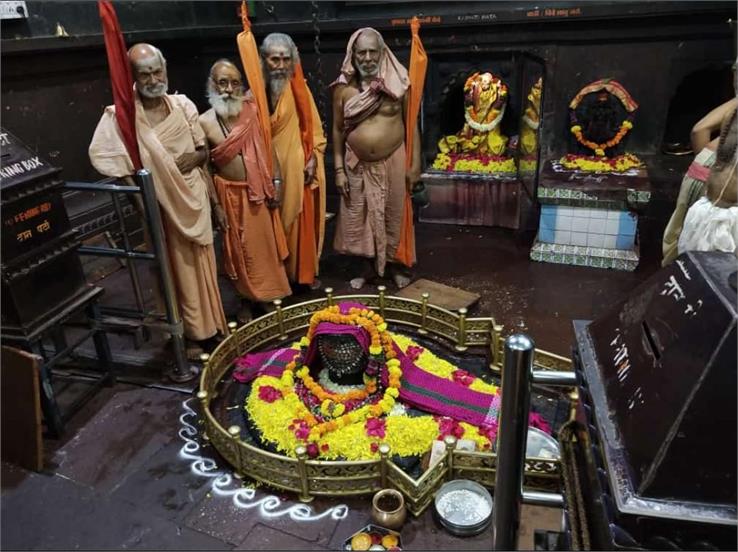
Grishneshwar Jyotirlinga is located in Ellora, near Aurangabad, Maharashtra. It is the 12th and final Jyotirlinga in the sacred list and holds immense significance in Hindu mythology. Dedicated to Lord Shiva, Grishneshwar is one of the holiest shrines and attracts thousands of devotees every year, especially those seeking blessings for spiritual growth and overcoming personal challenges.
The temple is believed to have been constructed by the famous queen Ahilyabai Holkar. The Grishneshwar Jyotirlinga is particularly unique as it is closely associated with the story of a woman who remained devoted to Lord Shiva, even in the face of personal tragedy, and was granted the divine grace of being reunited with her lost son.
Historical and Mythological Significance
The legend behind Grishneshwar is deeply rooted in devotion. According to the myth, a woman named Sudhikshina lost her child and had no peace. She worshipped Lord Shiva with unwavering devotion and prayed for the return of her son. Impressed by her sincerity, Lord Shiva appeared to her and blessed her, restoring her son. The temple is believed to be the site where this miraculous event took place, and is thus revered by all as a place where Lord Shiva grants the wishes of his devotees, especially in times of personal despair.
Grishneshwar is part of the significant pilgrimage circuit of Ellora, which also includes the famous Ellora Caves. The temple stands as a symbol of Lord Shiva’s infinite grace, offering hope to those who seek his intervention in their lives.
Architecture and Design
The Grishneshwar Temple is constructed in the traditional South Indian architectural style with a simple yet elegant structure. The temple complex includes intricate carvings of various Hindu gods and goddesses. The temple houses the Shiva Lingam, which is worshipped with devotion and reverence by pilgrims. The temple’s peaceful atmosphere adds to the spiritual aura, making it a perfect place for contemplation and prayer.
The temple also features a large courtyard where devotees gather to take part in religious rituals and a grand Nandi statue which can be seen near the entrance, symbolizing the vehicle of Lord Shiva. The carvings on the temple walls depict various scenes from Hindu mythology, offering a glimpse into the rich cultural and spiritual heritage of India.
Darshan and Rituals
- Opening Time: The temple is open every day from 5:00 AM to 9:00 PM.
- Darshan Timings:
- Morning Darshan: 5:00 AM to 12:00 PM
- Evening Darshan: 4:00 PM to 9:00 PM
- During Shravan Maas: Shravan Maas is a particularly auspicious period for visiting Grishneshwar. During this time, the temple sees an increase in visitors, and special rituals and prayers are performed.
- Puja Timings:
- Morning Puja: 5:00 AM to 7:00 AM
- Evening Puja: 7:00 PM to 8:30 PM
- Aarti Timings:
- Morning Aarti: 6:00 AM
- Evening Aarti: 7:30 PM
How to Reach Grishneshwar Jyotirlinga
- By Air:
The nearest airport to Grishneshwar Jyotirlinga is Aurangabad Airport, which is around 30 km away from the temple. From the airport, you can hire a taxi or take a private car to reach the temple. - By Road:
- Private Vehicle: Ellora is well connected by road to cities like Aurangabad (about 30 km), Nashik (approximately 250 km), and Mumbai (about 330 km). You can hire a private vehicle, or use Parijat Tour & Travels’ tempo traveller services for a smooth journey. For large groups, Parijat Tour & Travels also offers rental bus services that can accommodate everyone comfortably, making it a convenient option for groups.
- Bus: There are regular buses to Ellora from Aurangabad, and you can take a bus to reach the temple. For larger groups, you can also book a rental bus from Parijat Tour & Travels for a more comfortable journey.
- By Train:
The nearest railway station is Aurangabad Railway Station, which is well-connected to major cities like Mumbai, Nagpur, and Pune. After reaching Aurangabad, you can hire a taxi or auto-rickshaw to reach the Grishneshwar Temple, which is about 30 km from the station.
Distance from Lucknow, Uttar Pradesh
The distance from Lucknow to Grishneshwar Jyotirlinga is approximately 1,150 km by road. The journey can take around 18 to 20 hours by car, depending on traffic and road conditions. Alternatively, you can travel by train to Aurangabad and then proceed by taxi or auto-rickshaw to the temple.
Tips for Visiting Grishneshwar Jyotirlinga
- Best Time to Visit: The temple is crowded during Shravan Maas, Mahashivaratri, and the Navratri festival. To avoid the rush, visit in the early morning or during off-peak seasons.
- Dress Code: While there is no strict dress code, it’s advisable to wear modest clothing when entering the temple. Keep in mind the sacredness of the place.
- Offerings: Devotees typically offer milk, water, flowers, and rudraksha beads as part of their worship.
- Nearby Attractions: While visiting Grishneshwar, make sure to explore the famous Ellora Caves, which are UNESCO World Heritage Sites and home to rock-cut temples, monasteries, and stunning sculptures.
A visit to Grishneshwar Jyotirlinga will be both a spiritual and a scenic experience. The peaceful surroundings and the powerful aura of Lord Shiva make it an enriching journey that offers spiritual solace and blessings for all who visit.
Explore more about jyotirlinga
FAQs: Frequently Asked Questions
Q.1: What are the 12 Jyotirlingas and where are they located?
A1: The 12 Jyotirlingas are sacred shrines dedicated to Lord Shiva, spread across various parts of India. The locations of these temples are:
- Somnath – Gujarat
- Mallikarjuna – Andhra Pradesh
- Mahakaleshwar – Madhya Pradesh
- Grishneshwar – Maharashtra
- Kedarnath – Uttarakhand
- Bhimashankar – Maharashtra
- Kashi Vishwanath – Uttar Pradesh
- Rameswar – Tamil Nadu
- Nageshwar – Gujarat
- Vaijnath – Maharashtra
- Trimbakeshwar – Maharashtra
- Omkareshwar – Madhya Pradesh
Q.2: What is the significance of visiting all 12 Jyotirlingas?
A2: It is believed that visiting all 12 Jyotirlingas purifies the soul and grants the devotee liberation (moksha). This pilgrimage is considered a once-in-a-lifetime journey that brings spiritual fulfillment and absolution of sins.
Q.3: Which Jyotirlinga is associated with the Trimurti (Brahma, Vishnu, Shiva)?
A3: The Trimbakeshwar Jyotirlinga, located in Nashik, Maharashtra, is associated with the Trimurti as it is believed to embody the three main forms of the Divine: Brahma, Vishnu, and Shiva.
Q.4: Can devotees touch the Shivlinga at the Jyotirlinga temples?
A4: Yes, devotees are allowed to touch the Shivlinga at the Nageshwar Jyotirlinga, which is located in Dwarka, Gujarat. This is a unique feature among the 12 Jyotirlingas.
Q.5: How should one travel to the Jyotirlingas in India?
A5: Traveling to the Jyotirlingas can be done by different means:
- By Road: You can rent a private vehicle or book a Tempo Traveller through Parijat Tour & Travels for a smooth and comfortable journey.
- By Train: Trains are available to nearby stations, and you can then take a taxi or bus to reach the temples.
- By Air: Many cities near the Jyotirlingas have airports. From the airport, you can take a taxi to reach your destination.
Q.6: Why did Mahmud of Ghazni attack the Somnath temple?
A6: Mahmud of Ghazni attacked the Somnath Jyotirlinga in Gujarat multiple times, intending to plunder the riches and destroy the temple. Despite this, the temple was rebuilt several times, symbolizing the resilience of the divine presence of Lord Shiva.
Q.7: What is the best time to visit the 12 Jyotirlingas?
A7: The best time to visit the Jyotirlingas is during the winter months (October to March) when the weather is more pleasant. You may also plan your visit during Shravan Maas (July-August), a highly auspicious month for Lord Shiva worship.
Q.8: Are the 12 Jyotirlingas spread over many states in India?
A8: Yes, the 12 Jyotirlingas are spread across different states in India including Maharashtra, Gujarat, Andhra Pradesh, Uttarakhand, Madhya Pradesh, Uttar Pradesh, and Tamil Nadu, each holding historical and spiritual significance.
Q.9: Which is the most famous Jyotirlinga?
A9: The Kashi Vishwanath temple in Varanasi, Uttar Pradesh is one of the most famous and revered Jyotirlingas. It is also a major pilgrimage destination for millions of devotees seeking moksha.
Q.10: How do I plan my journey to the 12 Jyotirlingas?
A10: To visit the 12 Jyotirlingas, plan your journey based on proximity, weather, and your budget. You can hire a Tempo Traveller or Bus Rental from Parijat Tour & Travels for a comfortable group tour. It’s advisable to start with the nearest Jyotirlinga and gradually cover the rest, depending on your route and convenience.
Q.11: Is it possible to complete the entire 12 Jyotirlinga pilgrimage in one trip?
A11: It is possible to complete the entire pilgrimage in one trip, though it requires a well-planned itinerary. Consider traveling by private bus rental for large groups or Tempo Traveller services from Parijat Tour & Travels to ensure convenience and comfort.
Q.12: Which Jyotirlinga is located in Uttarakhand?
A12: Kedarnath Jyotirlinga, located in Uttarakhand, is the only Jyotirlinga in the region. It is located in the Himalayan ranges, making it a significant and sacred pilgrimage site.
Q.13: Can I book a tour to all 12 Jyotirlingas?
A13: Yes, you can book a personalized pilgrimage tour to all 12 Jyotirlingas through travel agencies like Parijat Tour & Travels. They offer customized packages that include travel by bus, train, or Tempo Traveller for comfort and convenience.
Q.14: What is the importance of the Kashi Vishwanath temple in Varanasi?
A14: The Kashi Vishwanath temple in Varanasi, Uttar Pradesh, is one of the most significant temples for Hindus. It is believed to grant moksha (liberation) to devotees and is an iconic center of spiritual power and devotion.
Q.15: Which Jyotirlinga is known for its association with Lord Rama?
A15: The Rameshwar Jyotirlinga, located in Rameswaram, Tamil Nadu, is associated with Lord Rama. It is said that Lord Rama worshipped Lord Shiva here before embarking on his battle to rescue Sita from Ravana.
Q.16: What is the history behind the construction of the Somnath temple?
A16: The Somnath Temple, located in Prabhas Patan, Gujarat, is one of the oldest and most renowned temples dedicated to Lord Shiva. It has been destroyed and rebuilt several times throughout history, most notably by Mahmud of Ghazni in 1025 CE. Despite its destruction, the temple continues to be a symbol of resilience and faith, attracting millions of devotees every year.
Q.17: What are the special rituals performed at the Kashi Vishwanath temple?
A17: At the Kashi Vishwanath temple, the daily rituals include morning and evening aartis, Abhishekam (ritual bathing of the Shivling), and Vedic chants. The temple also holds a special significance during the Shravan month (July–August) when thousands of devotees perform special prayers and rituals to seek blessings from Lord Shiva.
Q.18: Can we perform the puja at all Jyotirlingas during the Shravan month?
A18: Yes, Shravan Maas (the month dedicated to Lord Shiva) is considered the most auspicious time to visit the 12 Jyotirlingas. During this month, special rituals are performed at each temple, including rudrabhishek, fasting, and night-long prayers. Devotees believe that worshipping Lord Shiva during this time brings immense blessings.
Q.19: Which Jyotirlinga is associated with the story of Lord Rama’s journey?
A19: The Rameshwar Jyotirlinga in Rameswaram, Tamil Nadu is linked to the story of Lord Rama. According to the legend, Lord Rama installed a Shivling to seek Lord Shiva’s blessings before embarking on his journey to Lanka to rescue his wife, Sita. This temple holds great significance for devotees of both Lord Rama and Lord Shiva.
Q.20: How long does it take to complete a journey to all 12 Jyotirlingas?
A20: The time to complete the pilgrimage of all 12 Jyotirlingas depends on the travel route, mode of transport, and time spent at each temple. On average, it may take 3 to 4 weeks to visit all the temples. You can book a tour package with Parijat Tour & Travels, which can provide a well-planned itinerary and transportation options like Tempo Traveller or private buses for a comfortable journey.
These FAQs will help in understanding the significance, locations, and travel details related to the 12 Jyotirlingas, guiding you to plan your sacred journey.


